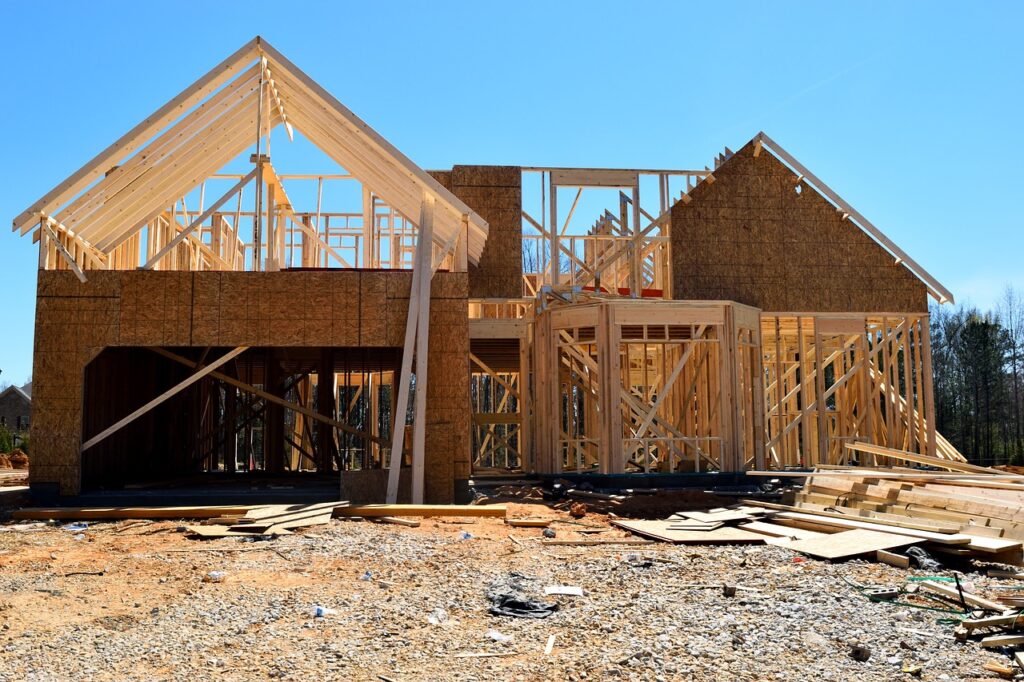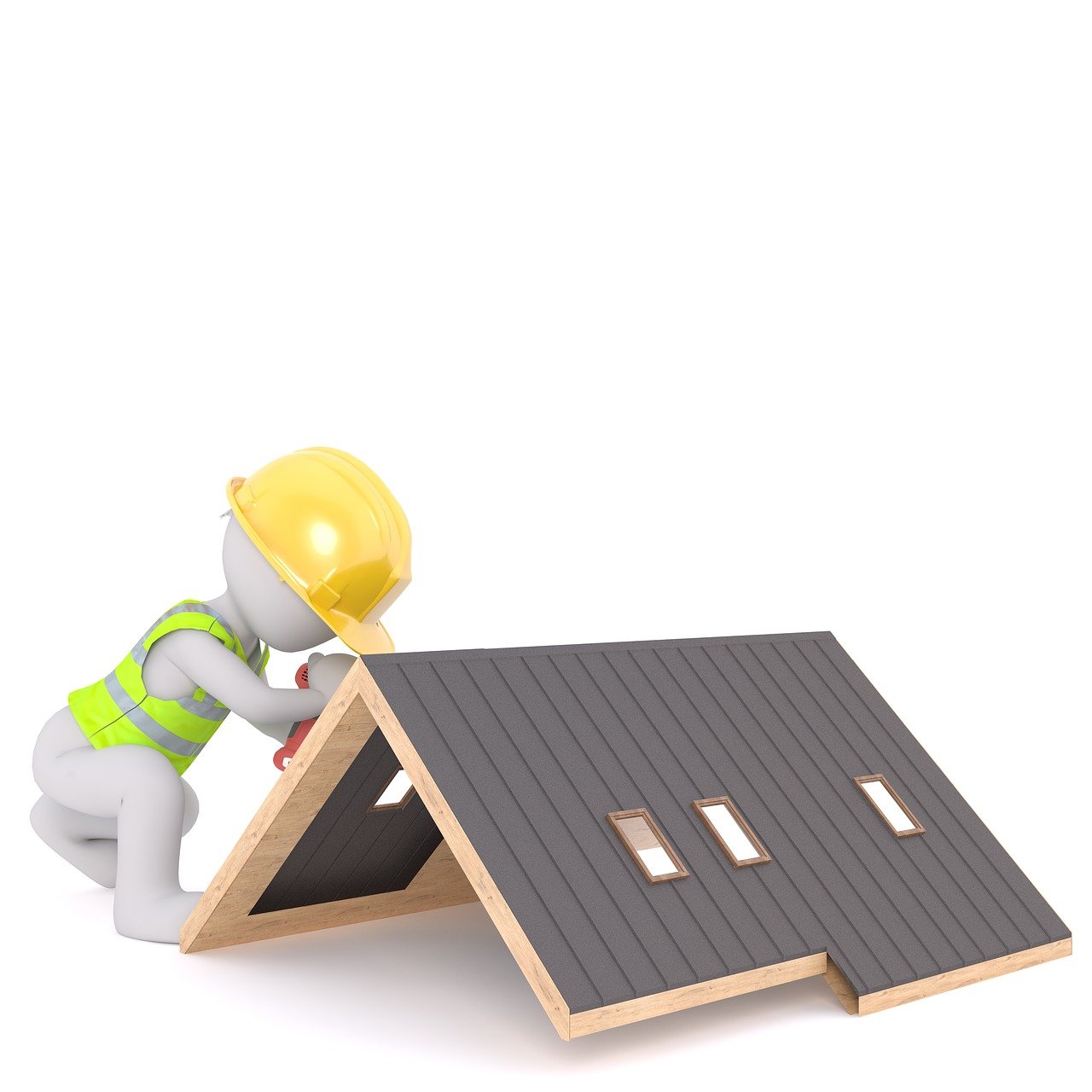Sealing a roof may seem like a straightforward decision, but there are several factors to carefully consider before undertaking this task. From the type of roof to the climate conditions and the long-term maintenance costs, making an informed choice is vital to ensure the longevity and effectiveness of the sealant. This article explores the key factors that should be taken into account before sealing a roof, providing valuable insights for homeowners and professionals alike. So, before you embark on this endeavor, let us guide you through the crucial considerations that will help you make an informed decision for your roof.

This image is property of pixabay.com.
Climate
Weather Patterns
One of the key factors to consider before sealing a roof is the climate of your area. The local weather patterns play a significant role in determining the effectiveness of a sealed roof. If you live in an area with frequent heavy rainfall or high humidity levels, the chances of moisture seeping into your roof are higher. On the other hand, if you reside in an arid region with minimal rainfall, the need for roof sealing may not be as critical. Understanding the weather patterns of your area will help you evaluate the necessity and longevity of a sealed roof.
Rainfall Level
The amount of rainfall in your region is an important aspect to consider when deciding whether to seal your roof. If your area experiences heavy rainfall or regular storms, there is a higher risk of water penetration through your roof’s surface. Sealing the roof can provide an additional layer of protection against water damage, preventing leaks and potential costly repairs. However, if your area has low rainfall levels, the need for roof sealing may not be as pressing.
Temperature Extremes
Extreme temperature variations can also impact the performance of your roof. If you live in an area with scorching summers and freezing winters, the expansion and contraction of roofing materials can lead to cracks and damage over time. A properly sealed roof can help mitigate these issues by providing an extra layer of insulation and protection against thermal expansion.
Roof Material
Age and Condition
The age and condition of your roof material are crucial factors to consider before sealing your roof. If your roof is relatively new and in good condition, sealing it can help prolong its lifespan and maintain its structural integrity. However, if your roof is old and showing signs of deterioration, such as missing shingles or significant wear, it may be more cost-effective to consider roof replacement rather than sealing. It is essential to assess the overall condition of your roof before making a decision.
Type of Material
Different roofing materials have varying levels of compatibility with roof sealants. Some materials, such as asphalt shingles, metal, or concrete tiles, are more suitable for sealing, ensuring a proper bond and long-lasting protection. However, materials like slate or wood may not be as compatible with certain sealants. It is essential to consult with a roofing professional to determine the best sealant options for your specific roof material.
Compatibility with Sealant
Not all sealants are compatible with every type of roof material. It is vital to choose a sealant that is specifically designed for your roof type to ensure optimal bonding and performance. Using an incompatible sealant can lead to ineffective sealing and potential damage to the roof material. Consulting with a roofing professional can help determine the right sealant for your roof’s material and ensure a secure and long-lasting seal.

This image is property of pixabay.com.
Roof Design
Pitch and Slope
The pitch and slope of your roof influence the effectiveness of sealing. Steep roofs with a high pitch allow water to flow off more quickly, reducing the risk of water pooling and leakage. In contrast, flat or low-slope roofs tend to have a higher chance of water retention, which can lead to leaks if not properly sealed. Before sealing your roof, it is important to consider its design and assess the potential water drainage and pooling issues.
Surface Area
The size of your roof’s surface area is another crucial factor to consider before sealing. Larger roofs may require more sealant material and extensive labor, resulting in higher costs. Additionally, larger roofs may have more complex designs and multiple sections that need attention during the sealing process. It is important to have a clear understanding of the surface area of your roof and factor it into your decision-making process.
Complexity
The complexity of your roof’s design can impact the ease and effectiveness of sealing. Roofs with multiple levels, dormers, or chimneys may present challenges during the sealing process, requiring additional time and expertise to ensure all areas are properly sealed. Assessing the complexity of your roof design will help you determine the level of professional expertise needed and the overall cost involved in the sealing process.
Ventilation
Attic Ventilation
Proper attic ventilation is crucial for maintaining the health and longevity of your roof. Adequate ventilation helps regulate temperature and moisture levels in the attic, reducing the risk of condensation buildup and damage to the roof’s structure. Before sealing a roof, it is important to ensure that your attic is well-ventilated. If your attic lacks proper ventilation, it is recommended to address this issue before considering roof sealing.
Ridge Vent
A ridge vent is a type of ventilation system installed along the peak of a roof. It allows hot air to escape from the attic, promoting airflow and preventing heat buildup. When sealing a roof, it is important to ensure that the ridge vent remains functional and unobstructed. Properly sealing around the ridge vent is essential to maintain its effectiveness and prevent issues such as water penetration or air leaks.
Soffit Vent
Soffit vents are located along the eaves of a roof and facilitate the intake of fresh air into the attic. These vents work in conjunction with ridge vents to create a balanced airflow system. When sealing a roof, it is important to ensure that soffit vents are unobstructed and properly sealed to prevent any potential issues with ventilation. Properly maintaining and sealing these vents will contribute to the overall effectiveness of the roof sealing process.

This image is property of pixabay.com.
Existing Issues
Leaks or Water Damage
Before sealing a roof, it is crucial to address any existing leaks or water damage. Sealing a roof without addressing underlying issues can trap moisture inside, leading to further damage and potential mold growth. Thoroughly inspect your roof for any signs of leaks or water damage, and consult with a roofing professional to assess the extent of the problem. Resolving these issues before sealing will ensure a more effective and long-lasting seal.
Mold or Mildew
Mold or mildew growth on your roof can compromise the effectiveness of sealants and pose health risks. If you notice any signs of mold or mildew, it is essential to address this issue before sealing your roof. Mold remediation may be necessary to eliminate existing growth and prevent future problems. Sealing a roof without addressing mold or mildew issues can lead to further contamination and damage.
Structural Damage
Inspect your roof for any signs of structural damage before deciding to seal it. Structural issues, such as sagging or damaged support beams, can compromise the integrity of your roof. Sealing a structurally compromised roof without addressing the underlying problems can lead to further deterioration and potential safety hazards. Prioritize the repair of any structural damage before proceeding with the sealing process.
Cost and Budget
Sealant Costs
The cost of sealant can vary depending on the type and quality of the product. Higher-quality sealants tend to have a higher price tag but offer better durability and longevity. It is important to consider the cost of sealant and factor it into your budget. Additionally, the size of your roof and the extent of sealing required will also impact the overall sealant cost.
Labor Expenses
Roof sealing typically requires professional expertise, and labor expenses can vary depending on the complexity of the job and the rates of the roofing contractor. Larger roofs or roofs with complex designs may require more labor hours and skilled workers, resulting in higher costs. Obtaining multiple quotes from reputable roofing contractors will help estimate the labor expenses and assist in making an informed decision.
Long-Term Savings
While the initial cost of sealing a roof may seem like an investment, it is essential to consider the potential long-term savings. Properly sealed roofs can provide energy efficiency benefits by reducing heat transfer, resulting in lower energy consumption and utility bills. Additionally, a well-sealed roof can minimize the risk of water damage and leaks, potentially saving you from expensive repairs in the future. Evaluating the long-term savings associated with roof sealing can help justify the initial cost.
Maintenance
Frequency
Roof sealing, like any other home maintenance task, requires periodic upkeep. The frequency of maintenance will depend on various factors, including the type of sealant used and the climate of your area. Some sealants may require reapplication every few years, while others may have a longer lifespan. Consulting with a roofing professional will help determine the recommended frequency of maintenance for your specific roof sealing.
Ease of Access
Consider the accessibility of your roof before sealing it. If your roof is easily accessible, regular maintenance tasks such as cleaning or resealing can be more straightforward. However, if your roof has a steep pitch or complex design, maintenance tasks may require specialized equipment or professional assistance. Taking into account the ease of access to your roof will help assess the practicality and convenience of ongoing maintenance.
Required Expertise
Certain maintenance tasks related to roof sealing may require specialized expertise. While some basic maintenance, such as cleaning debris or inspecting for damages, can be performed by homeowners, more complex tasks, such as resealing or repairing cracks, may require professional guidance. Evaluating your level of expertise and comfort with performing maintenance tasks will help determine the need for professional assistance.
Energy Efficiency
Insulation Benefits
A properly sealed roof can provide insulation benefits, improving the energy efficiency of your home. Sealing helps prevent air leaks and reduces heat transfer, keeping your home cooler in the summer and warmer in the winter. This increased insulation can lead to reduced energy consumption and lower utility bills, making sealing a cost-effective method to enhance energy efficiency.
Reduced Heat Transfer
Heat transfer through the roof can significantly impact the indoor temperature of your home. By sealing your roof, you create a barrier that minimizes heat transfer, ensuring that your cooling or heating systems operate more efficiently. This reduction in heat transfer contributes to a comfortable living environment and reduces the strain on your HVAC systems, potentially extending their lifespan.
Lower Energy Consumption
Improved energy efficiency resulting from a properly sealed roof can lead to lower energy consumption. When your home is better insulated, your HVAC systems do not have to work as hard to maintain the desired temperature. Consequently, this can lead to reduced energy usage and lower monthly energy bills. Considering the long-term savings associated with lower energy consumption can make sealing a roof a worthwhile investment.
Resale Value
Market Demand
Sealing a roof can enhance the resale value of your home, especially in areas where sealed roofs are in high demand. Potential buyers often prioritize homes with well-maintained roofs, as it signifies a reduced risk of future repairs and water damage. Understanding the market demand for sealed roofs in your area can help you make an informed decision that aligns with your long-term goals.
Enhanced Curb Appeal
A well-sealed roof can significantly improve the curb appeal of your home. The appearance of your roof plays a crucial role in the overall aesthetics and visual appeal of your property. An aging or damaged roof can detract from the appeal of your home, while a properly sealed roof enhances its visual appeal. Investing in roof sealing can make your home more appealing to potential buyers and positively impact its resale value.
Home Inspection Impact
When selling a home, a thorough home inspection is often conducted by potential buyers. A sealed roof that is well-maintained can offer peace of mind to buyers, demonstrating that proper care has been given to the property. This can lead to a smoother home inspection process and potentially increase the value of your home. Understanding the impact of a sealed roof on the home inspection process can help you make an informed decision regarding the resale value of your property.
Warranty Coverage
Manufacturer Warranty
Before sealing your roof, it is important to consider any existing warranties from the manufacturer of your roofing material. Some manufacturers may offer warranties that could be voided if the roof is not sealed according to their specifications. Understanding the terms and conditions of these warranties will help ensure that your roof remains covered and protected in case of any future issues.
Sealant Warranty
Sealants generally come with warranties that guarantee their performance and durability for a specified period. It is crucial to thoroughly review the sealant warranty to understand its coverage and limitations. Some warranties may require regular maintenance or inspections to remain valid. Understanding the terms and requirements of the sealant warranty will help you assess the long-term protection and value it offers.
Exclusions and Limitations
When considering roof sealing, it is essential to familiarize yourself with any exclusions or limitations in the warranty coverage. Some warranties may exclude specific types of damage or have limitations on the conditions under which they will provide coverage. By understanding these exclusions and limitations, you can make an informed decision about the adequacy of the warranty and the overall value it provides.
In conclusion, before sealing a roof, there are several factors to consider that can impact the effectiveness, cost, and long-term benefits of the sealing process. The climate, roof material, design, ventilation, existing issues, cost, maintenance requirements, energy efficiency, resale value, and warranty coverage should all be carefully evaluated. By thoroughly assessing these factors and consulting with a roofing professional, you can make an informed decision that ensures the longevity, protection, and value of your roof.
